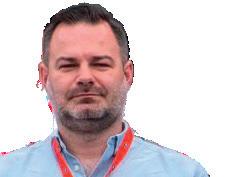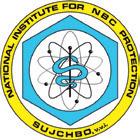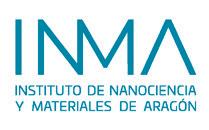Detecting chemical hazards


The ability to rapidly detect and identify chemical hazards would be enormously valuable for first responders dealing with the aftermath of accidents and industrial leaks. We spoke to Dr Damir Asoli about the work of the SERSing project in developing a low-weight, handheld device to identify chemical hazards at low concentrations.
An industrial accident or terrorist attack can lead to the leak of hazardous chemical substances into public places, which may represent a significant threat to the health of first responders and people in the surrounding area. The ability to rapidly identify the nature of a threat would help first responders deal with it effectively, an issue central to the EU-funded SERSing project. “First responders have to come to the scene of an industrial accident or terrorist attack and find out what the threat is,” says Dr Damir Asoli, a member of the project management group. The project brings together nine partners from across Europe to develop devices to detect and identify chemical hazards, focusing on five nerve agents in particular. “In the project we are mainly looking at A-234 (Novichok), Tabun, VX, hydrogen cyanide, hydrogen sulfide and sarin,” outlines Dr Asoli. “Some of these chemical hazards are in the liquid phase, while others are in the gas phase.”
SERSing project
The project team is working to develop portable, low-weight handheld SERS-based (Surface Enhanced Raman Spectroscopy) devices to detect and identify these chemical hazards, which would be much easier to use than the often cumbersome detectors used today. The device itself is a little bigger than a human hand, with a washer and a nanostructured silver or gold substrate in the middle, which is the active part. “The washer is there solely for handling purposes. A first responder at the scene of an accident would collect an extremely small amount of liquid in a bottle – typically we use 2 microlitres – then put it over the active area of the device, which is the substrate,” explains Dr Asoli. An optical phenomenon called localized surface plasmon resonance (LSPR) is used to amplify the Raman scattering signal from molecules, which in practice involves (1) depositing analyte on the substrate, (2) sending light from the device to the substrate, (3)
collecting and analysing the Raman scattered light “We typically use a 785 nanometre laser wavelength to detect and identify relevant compounds,” continues Dr Asoli.
Under the right conditions, a strong SERS signal can be generated, which allows even trace detection of analytes, i.e. detection at an extremely low analyte concentration level. In addition, each compound displays a specific Raman ‘fingerprint’ spectrum, which means that sample identification can be performed within minutes. Typical SERS substrates are nanostructured silver or gold, which display favourable optical properties in the visible and near-infrared spectral regions. One key requirement is that analyte molecules need to be located very close to the nanostructured metal surface, or preferably adsorbed on the metal surface. Dr Asoli says that the SERS substrates can also be functionalised to get a better response in cases where molecules don’t stick to the metal surface. “You can


functionalise the surface of gold with some add-ons, so that it picks up certain molecules,” he outlines. Several add-ons have been developed in the project for gas sensing, which Dr Asoli says is a major technical challenge.
“It’s very difficult to make SERS measurements of hazards in gas phase. You have to attract gas to the substrate before you can measure it, which is the tricky part,” he acknowledges.
“We have developed an add-on gas cell which can attract molecules to the device, then we can use established principles in detection.”
The project team have demonstrated the ability to detect hydrogen cyanide in the gas phase, based on the same SERS principles, one of the two research paths that is being followed in the project alongside liquid sensing. Researchers are now working to improve and refine the device further, with Dr Asoli and his colleagues at Silmeco focusing on the substrate, while other partners are contributing in different ways.
“We are developing different elements in the project, including highly innovative chips and AI algorithms, and then combining it in a handheld device,” he says. The project team are also looking to assess the effectiveness of the device, and field tests have recently been
conducted in the Czech Republic. “We spent a full day on liquid sensing, and one full day on gas sensing,” continues Dr Asoli. “For liquid testing, for example, we were able to detect A-234 (Novichok) at lower concentrations than with conventional Raman spectroscopy.”
Helping first responders
This ability to rapidly identify chemical hazards would be enormously valuable to
typically take a sample, which is then sent on for further analysis; Dr Asoli says the SERSing device would work much quicker. “The first responders will have their own hand-held device. They would be able to take a sample of the liquid chemical hazard, and then do the testing immediately,” he stresses. “The handheld gas cell is also extremely easy to use. You can do the sampling, and take measurements within minutes.”
“We spent a full day on liquid sensing, and one full day on gas sensing For liquid testing, for example, we were able to detect A-234 (Novichok) at lower concentrations than with conventional Raman spectroscopy.”
first responders such as firefighters, who may be exposed to dangerous substances when dealing with the aftermath of an accident or industrial leak. “First responders may have to deal with different types of chemical and biological agents. If there is a leak of hazardous substances at the site of an accident, it can be difficult to identify what it is,” says Dr Asoli. Currently first responders arriving at the scene of an industrial leak
The device also offers several other benefits in comparison to existing technologies. It is more sensitive and provides results much quicker than other technologies, while it is also relatively cost-effective, which is always an important consideration. “The other technologies commonly in use in this area are highly expensive, whereas the SERSing device is relatively cheap.” says Dr Asoli. The next step is to develop the devices further and
















